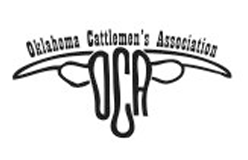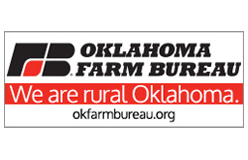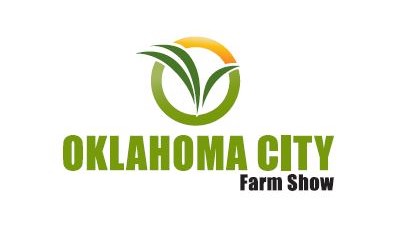
For this edition of Wheat Letter by US Wheat Associations, they sat down with Mitch Skalicky, USW’s regional vice president for Mexico, Central America, the Caribbean, and Venezuela. With a career spanning decades and continents, he is a cornerstone of USW’s international market development work.

Skalicky opened the Mexico office in 1997 after arriving from Panama, where he was regional vice president from 1995 to 1997. He has represented USW in several international management and marketing positions, including assignments in Washington, DC, Guatemala, Mexico, Panama and Morocco, where he served as regional director for North Africa.
In Mexico, Skalicky has played a crucial role in shaping the strong relationships that have made Mexico consistently the largest buyer of U.S. wheat. This interview includes reflections on his career, insights on what it takes to build enduring customer trust and the future of the Mexican wheat market.
1. Take us back to the beginning. Walk us through your early career with Great Plains Wheat/USW.
After graduating from the American Graduate School of International Management in Glendale, Arizona, with my master’s degree in international management, I was interviewing with companies and learned about Great Plains Wheat, one of USW’s legacy organizations. The president asked me to interview to work in the Washington, DC, office and within less than a month, I was there working.
I started working in the Great Plains Wheat office as the program coordinator, who was in charge of programs for Europe, Africa, the Middle East and Latin America, working closely with the state wheat commissions, largely in the Great Plains at that time.
From there, I transferred to the office in Guatemala City, Guatemala, as the marketing specialist and then later as the assistant regional director covering Mexico, Central America, the Caribbean and Venezuela – my first tour working in these wheat markets.
Given the size and potential in Mexico, we relocated the office to Mexico City, where I continued to work as the assistant regional director. At that time, the organization’s name changed to U.S. Wheat Associates, following the merger between Great Plains Wheat and the Western Wheat Associates.
After working for several years in Mexico, I was transferred to Panama City, Panama, as the assistant regional director.
After that, there was an opportunity to be promoted to regional director for North Africa. This opportunity was based in Morocco, and one of the main objectives beyond the day-to-day market development work was to work collaboratively with the Moroccan private sector, the Moroccan government and Buhler in Switzerland to build Africa’s first French-speaking milling school.
This effort was a major undertaking as it represented USW’s largest commitment, dollar-wise, to any project overseas at that time. Following challenges and constraints, the milling school was built and equipped, and personnel were hired. The facility became known as IFIM, located in the outskirts of Casablanca, Morocco.
This six-year project involved the work of many fine people, including Dr. Elie Posner, former K-State milling professor, and Mustafa Sirissy, IFIM’s first milling instructor.
Years later, Peter Lloyd moved to Morocco to continue to work on the technical aspects of the program, and Tarik Gahi was hired to help provide ongoing technical expertise.
3. Tell us about opening the Mexico City office in 1997.
The early years of opening the USW office in Mexico City were challenging. Post implementation of the North American Free Trade Agreement (NAFTA), the office was shifted from Panama City to Mexico City in August 1997. For more than one year, there were no employees working in Mexico other than myself – then temporary help and a part-time bookkeeper.
It was decided to transfer Steve Wirsching, who had been working in the USW office in Santiago, Chile, to work with me out of Mexico City. After that, our top priority was to hire a full-time accountant. Fortunately, we hired Ana Laura Salinas on April 15, 1999, and she is still working for us today.
4. Mexico is consistently the largest buyer of U.S. wheat. How has USW contributed to this long-term success?
USW has been working with the Mexican milling industry closely over the last 45 years. Over the years, the vast majority of wheat trade has moved from government buying to purchases from private sector flour millers. In the earlier years, there were still quite a number of government buying offices across the region – CONASUPO in Mexico, Jamaican Cereals Office in Jamaica and other state trading offices in Haiti, the Dominican Republic, Nicaragua and others.
We have definitely made significant progress in our work in Mexico on all fronts. We have worked with both the Mexican government and the private sector on projects involving market information, technical training and trade servicing.
5. Today, Mexico is home to some of the world’s largest and most sophisticated millers in the world. How does USW work to maintain a competitive advantage with these millers against other global origins?
USW was the only wheat farmer-driven organization working in Mexico. Only in the last five or so years did the Canadians introduce a trade financial specialist working and living in Mexico.
We have taken our fundamental base of market development programs and tweaked them over time and created new programs related to grain transportation and logistics workshops. We do customized, individual seminars with our key clients and implement other opportunities through our annual program analysis. Those seminars include milling, baking, grain grading and inspection, cookie and cracker technology, customized trade missions, export credit guarantee programs and more. The inclusion of new technology allows us to provide additional customer service and solutions now and into the future.
6. After returning home from a recent visit, the USW leadership team commented on the amazing relationships between USW staff in Mexico and their customers. How has maintained such great partnerships over such a long time?
The partnership between our USW staff and Mexican customers is a key component of our work. We need to be considered reliable, trustworthy, discreet and able to handle information with professionalism, confidence and discretion. We often need to invest years to earn that access and trust.
Through more than four decades of ongoing interactions, our Mexican customers know that we will provide them factual, concise and accurate data, not just provide them with simply what we think they want to hear. As a steady, stable barometer of information on a daily, weekly, monthly and annual basis – supplemented through published reports – we have earned that trust and confidence that is so important to us working internationally.
7. What excites you about what’s coming next in the Mexican market? Or what challenges do you see on the horizon?
Do not underestimate the importance of the Mexican market simply given its proximity. As communications, transportation and technology continue to advance, I envision that the market will become even more competitive. Thirty years ago, the principal wheat suppliers to Mexico were the United States and Canada. Today, added to that group are competitors from France, Germany, Poland, Romania, Russia, Ukraine, Argentina and Brazil. Distance, logistics and economics do not make exports from Australia feasible right now, but future breakthroughs in technology could change that.
Still, under the leadership of the USW Board of Directors and USW leadership, USW has the most dedicated and committed group of personnel globally that work every day to promote U.S. wheat export sales. This work is why Mexico is currently on track to be the top world market for U.S. wheat producers for the 10th consecutive year in 2026.
Article courtesy of US Wheat Associates

















